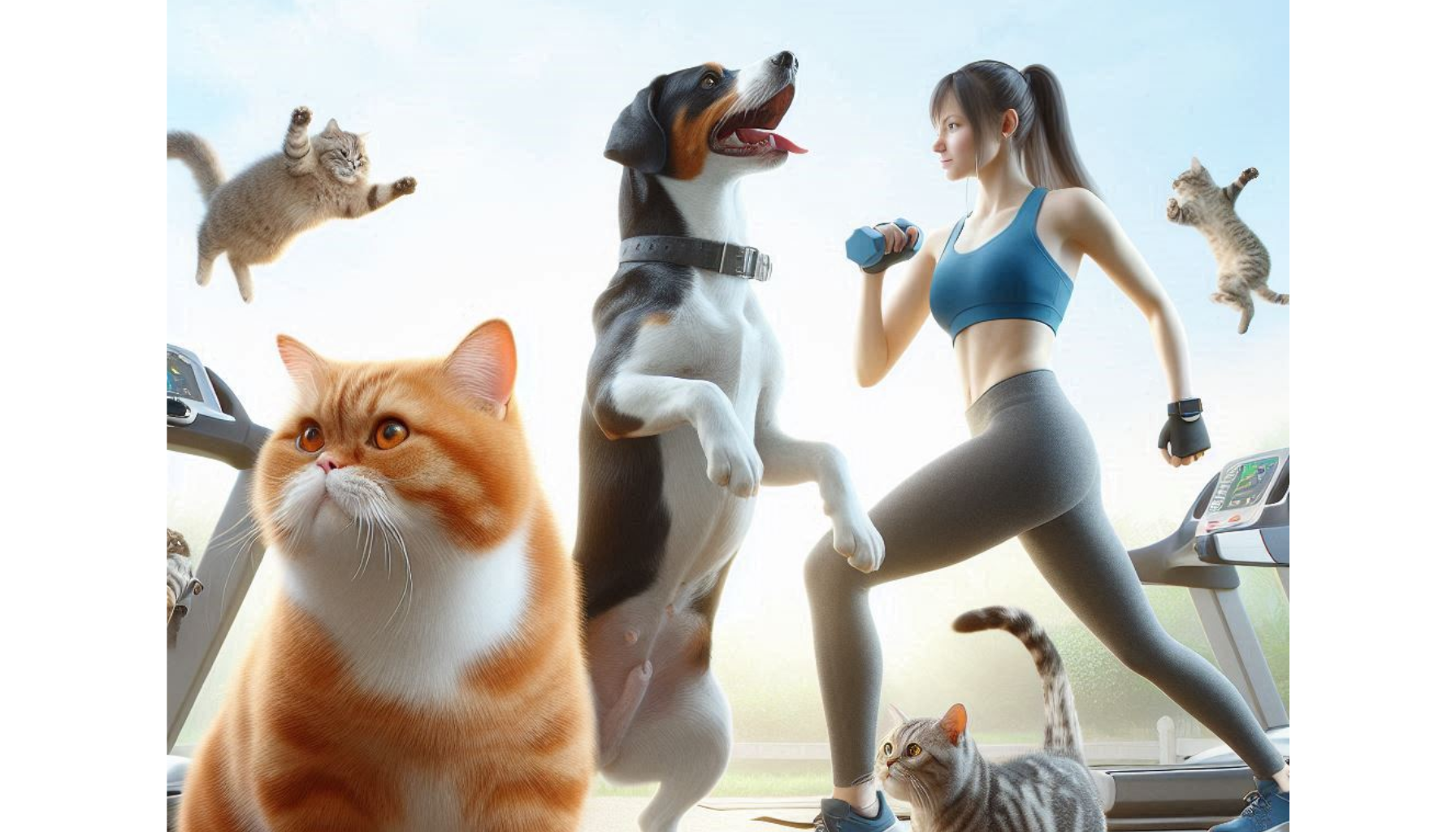Obesity is one of the most common health problems in pets, and it can lead to serious medical issues, including diabetes, arthritis, heart disease, and a reduced lifespan. Many pet owners don’t realize their furry friends are overweight until health problems arise.
The good news? Pet obesity is preventable! In this guide, we’ll cover how to recognize obesity, prevent weight gain, and help your pet stay fit and healthy.
1. How to Tell If Your Pet Is Overweight ⚖️🐾
Many pet owners don’t recognize when their pet is too heavy. The best way to check is by using the Body Condition Score (BCS).
✅ Signs Your Pet Is at a Healthy Weight:
✔ Visible waistline (viewed from above).
✔ You can feel their ribs without pressing hard.
✔ No excess fat around the neck or belly.
🚨 Signs Your Pet Is Overweight:
❌ No visible waistline.
❌ You can’t feel their ribs due to excess fat.
❌ Heavy belly fat that sags when walking.
❌ Reduced energy and difficulty moving.
📌 Tip: If you’re unsure, ask your vet for a weight evaluation!
2. Know the Ideal Weight for Your Pet 🐕🐈
Ideal weight varies by breed and size. Here are some general weight ranges:
✅ Small Dogs (Chihuahua, Pug, Dachshund): 3-9 kg (6-20 lbs)
✅ Medium Dogs (Cocker Spaniel, Beagle): 10-25 kg (22-55 lbs)
✅ Large Dogs (Labrador, Golden Retriever): 25-45 kg (55-100 lbs)
✅ Cats (Domestic Shorthair, Siamese, Maine Coon): 3-7 kg (6-15 lbs)
🚨 Warning: Even 2-3 extra kg can shorten your pet’s life by up to 2 years!
3. Avoid Overfeeding – The Right Portion Size 🍽️
Overfeeding is the #1 cause of obesity in pets. Many pet owners give too much food without realizing it.
✅ How to Measure the Right Portion:
✔ Follow feeding guidelines on the pet food package.
✔ Use a measuring cup—don’t guess!
✔ Adjust portions based on activity level, age, and weight.
📌 Tip: Divide meals into two or three smaller feedings instead of one big meal!
4. Cut Out Extra Treats & Table Scraps 🚫🍖
Many pets gain weight from excess treats and human food.
🚨 Foods That Cause Weight Gain:
❌ Too many treats (more than 10% of daily calories)
❌ Table scraps (especially fatty meats, cheese, bread)
❌ Processed foods high in sugar or fat
✅ Healthier Treat Alternatives:
✔ Carrot sticks 🥕 (low-calorie and crunchy)
✔ Blueberries 🫐 (antioxidants and fiber)
✔ Plain, cooked pumpkin 🎃 (great for digestion)
✔ Freeze-dried meat 🍗 (high-protein and healthy)
📌 Tip: If you give treats, reduce meal portions to balance calories!
5. Choose the Right Type of Food 🥩🥦
Some pet foods contain too many carbs and fillers, leading to weight gain.
✅ What to Look for in Healthy Pet Food:
✔ High-protein and low-carb formulas
✔ Real meat as the first ingredient
✔ No artificial fillers (corn, wheat, soy)
✔ Omega-3 and fiber for weight control
🚨 Avoid: Foods labeled “high-calorie” or “for active dogs” if your pet is not very active.
📌 Tip: For overweight pets, look for “weight management” formulas with fewer calories.
6. Encourage Daily Exercise 🏃♂️🐾
Just like humans, pets need regular exercise to stay fit.
🐶 Exercise for Dogs:
✔ Daily walks (30-60 minutes)
✔ Play fetch or tug-of-war
✔ Agility games (running, jumping)
✔ Swimming (great for overweight or senior dogs)
🐱 Exercise for Cats:
✔ Laser pointer or feather wand play
✔ Food puzzle toys to encourage movement
✔ Cat tree or scratching post climbing
✔ Chasing interactive toys
📌 Tip: Start slowly with obese pets—overexercising can strain their joints.
7. Prevent Free Feeding & Control Meal Times ⏳
Many pets overeat when food is always available.
🚫 Avoid: Leaving food out all day (“free feeding”).
✅ Best Practice: Set specific meal times and remove uneaten food after 20 minutes.
📌 Tip: Use slow feeder bowls for dogs that eat too fast!
8. Monitor Your Pet’s Weight Regularly ⚖️
Keeping track of your pet’s weight helps prevent gradual weight gain.
✅ Weigh your pet once a month.
✅ Use a pet scale or weigh yourself while holding them.
✅ Adjust food if weight increases unexpectedly.
📌 Tip: Keep a weight journal to track progress!
9. Help Senior Pets Stay Active & Healthy 🐕🦳
Older pets gain weight more easily due to reduced activity.
✅ Feed lower-calorie senior pet food.
✅ Provide joint supplements (glucosamine & chondroitin).
✅ Choose gentle exercises (shorter walks, water therapy).
🚨 Warning: Obese senior pets have a higher risk of arthritis, diabetes, and heart disease.
10. Work with Your Vet for a Weight Loss Plan 👩⚕️🐾
If your pet is already overweight, don’t panic! A vet-approved weight loss plan can help.
✅ Vet-Supervised Weight Loss Tips:
✔ Set a realistic weight loss goal (1-2% body weight per week).
✔ Adjust diet to reduce calories gradually.
✔ Schedule regular weight check-ups.
🚨 Never put your pet on a crash diet—rapid weight loss is dangerous!
📌 Tip: Your vet can recommend special weight-loss prescription diets if needed.
Final Thoughts: A Fit Pet = A Happy Pet! 🐾🏃♂️
Obesity is a serious issue that can shorten your pet’s lifespan. But with the right diet, exercise, and portion control, you can keep them healthy and active!
✅ Measure food portions carefully.
✅ Limit treats & human food.
✅ Encourage daily exercise.
✅ Monitor weight changes & adjust food.
🐾 A healthy pet = a longer, happier life! Start today!
